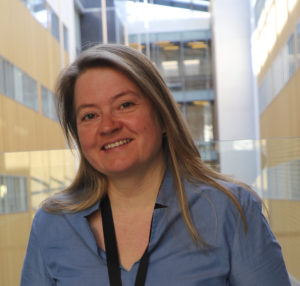Preclinical Assessment of Intrathecal rAAV9-Mediated miATM Therapy for Ataxia Telangiectasia in Mouse Models.
Principal researcher: Professor Hilde L. Nilsen
Institute: Oslo University Hospital, Norway
Cost: €150.000 over 24 months in partnership with AEFAT (Spain) and BrAshA-T (Australia)
Start Date: 1st August 2024
What are the researchers proposing to do and why?
This preclinical study utilizes an injection of Recombinant Adeno Associated Virus 9 (rAAV9) to deliver a therapeutic mini version of ATM into mice. ATM is the gene missing or not functioning completely in A-T. The aim is to provide safety and efficacy data for the rAAV9 mini-ATM therapy to be able to proceed to phase I/II clinical trials. Efficacy meaning how well the injection delivers the mini-ATM into the mice and if it produces the expected result.
Measurements will be conducted to observe survival, motor function, weight gain, and histopathological changes. A range of further comprehensive examinations, observations and measurements will be implemented including those to monitor signs of toxicity, tumour development, and organ damage. Particular attention will be given to the cerebellum and liver damage as it is commonly affected in AAV therapies*. This approach aims to provide valuable insights into the safety and potential use of this therapy as a treatment for A-T.
*AAV therapies – Gene therapy is a technique for correcting genetic defect by inserting a healthy copy of a gene into cells (replacing a faulty gene). To deliver a gene into cells, scientists use delivery systems called vectors. Adeno-associated viral (AAV) vector is a platform for delivering gene therapies. These vectors introduce therapeutic genes into patient cells to treat diseases.
How could it make a difference to the lives of those affected by A-T?
It is hoped that this preclinical study may pave the way for transformative treatments for individuals suffering from A-T in the long-term. The utilization of this gene therapy to deliver a therapeutic mini version of ATM could potentially rectify the underlying genetic defects associated with the disease and may alleviate symptoms. If successful, this could lead to a significant improvement in the quality of life for A-T patients.





